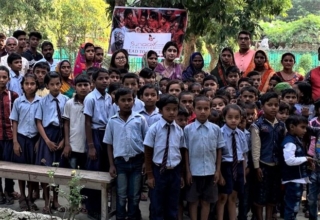
Apprenticeships articulate the multi-stakeholder demand for higher collaboration between employers, universities, and skills, including 1/3rd college, 1/3rd employment exchange, and 1/3rd ITI. We can reap significant rewards if we can cultivate support and agency via the budget to make this a vehicle fit for reaping our demographic potential says Ramesh Alluri Reddy, CEO at TeamLease Degree Apprenticeship
The upcoming budget for 2024-25 is expected to reinforce India’s economic priorities. We expect the government to focus not just on job creation but also on addressing skill gaps faced by industries, with intensified hiring expected amidst projected GDP growth exceeding 7%. The budget is expected to prioritize skill development and expand apprenticeship programs crucial for building a highly skilled workforce capable of advanced manufacturing and tech adoptions.
While India engaged nearly a million apprentices in 2023-24, aligning India’s demographic dividend with economic growth predictions requires replicating the engagement levels exhibited by developed economies. Increasing engagement from 0.14% to 3% of the workforce can yield approximately 20 million apprentices, substantially enhancing our industry’s talent pool and elevating the wage and productivity of the entry-level workforce. Additionally, it will foster linkages between academia and industries, effectively bridging the gap between classroom learning and practical shop floor experience.
This necessitates crucial reforms, including the need for a shift from bilateral to tripartite engagement (student-academic-industry) and an increase in Degree Apprenticeship programs. These programs, recognized for aligning with policy goals and employer needs, offer a strategic pathway for creating a specialized talent pool.
Integrating an Apprenticeship Credit Framework in line with the NEP and the existing National Skills Qualifications Framework (NSQF) is suggested to enable seamless transitions for student trainees across different programs and levels of education. A system where apprentices can gain credits allowing lateral entry into higher education from the second year can significantly enhance flexibility and accessibility in learning pathways.
Enabling apprenticeship longevity (current tenure is max 3 years) to reflect the current higher secondary education to PG education pathway is crucial. This will enhance participation from rural communities and women, who have the potential to address our abysmally low formal employment rates.
Additionally, by assigning weightage to educational institutions based on their NAAC accreditation, this model ensures equity in admissions, prioritizing quality and fairness. Further, with our China+1 positioning paying off, securing logistics, infrastructure, raw material access, and export markets becomes even more important. Our talent pool can be positioned to run the global supply chain efficiently, and an emphasis on Global Apprenticeships within these sectors could become a viable strategy.
To enhance skilling and workforce formalization, the apprenticeship quota in PLI-registered organizations should be increased from 15% to 30%, especially with the scheme proposed to be extended to new sectors like toys, textiles and apparel, furniture, tourism, logistics, small retail, and media and entertainment. Also, scaling apprenticeships via MSMEs can be achieved through government incentives for TPAs, thereby overcoming SMEs’ budget constraints.
Government needs to simplifying the current apprenticeship regulatory framework and streamlining technological interfaces should result in less procedural confusion, allowing energies to be focused on expanding the apprenticeship net.
In conclusion if the goal of this budget is to boost country’s global economic standing through strategic initiatives like the Make in India campaign, PLI scheme, Skill India Mission, and Digital India program, strengthening domestic industries across manufacturing, tech, start-ups, services, and sunrise sectors and bolstering productive capacities, then investing in capability building such as human capital, infrastructure, and education is expected by all of us.
More inputs:
Shreevats Jaipuria, Chair of the Education Committee at PHDCCI, in his budgetary recommendation wanted India to embrace apprenticeship as India’s flagship skill development program on the lines of the German Dual System of VET with substantial funding of Pradhan Mantri Kaushal Vikas Yojana (PMKVY). In his memorandum last month, the Committee head also recommended Undertaking a robust analysis of current skill gaps to promote effective skill development. “Skill Mapping is to be done to scientifically plan human resource needs in the different sectors of the economy.” He further added, “It is observed that India ranks 134 among 193 countries in the Human Development Report 2023/2024. India’s labor force is characterized by a high proportion of employment in agriculture and the informal sector. At this juncture, there is an urgent need to create a highly skilled talent base and to ensure the formation of a strong human capital base ready to serve the nation and engage with the World from a position of strength and valor. The socio-economic sector requires focus on twin merit goods of education with skill development and basic health with safety to continue with a longer-term vision. Focus on education as well as skill development is the need of the hour to reap the dividends of our demographic advantage and would hold a crucial place for supporting India in its journey towards being AatmaNirbhar.”
Sripal Jain, CA, CPA, Co-Founder and Global Instructor at Simandhar Education: “The upcoming Union Budget presents a significant opportunity for the government to enhance competency in technology-driven accounting processes. India’s potential as a global hub for skilled accounting professionals is immense. To unlock this potential, the government should focus on providing new avenues for Indian nationals to upskill in universal standards of accounting and encourage global mobility. Easing access to educational loans and reducing GST on international qualifications are crucial steps that can empower our workforce to meet global demands. These measures will not only support the growth of our accounting sector but also reinforce India’s position in the global market.”
Moral: India is a country with the highest youth dividend. We are at a crucial juncture where we need to turn this dividend into constructive nation-building. Otherwise, we risk the boom fading out.







